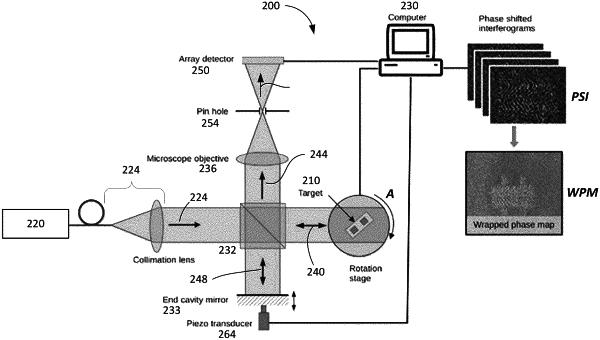| CPC G06T 7/55 (2017.01) [G06T 5/002 (2013.01); G06T 5/10 (2013.01); G06T 7/13 (2017.01)] | 18 Claims |

|
1. A method for assessing topology on an object, the method comprising:
transforming a first wrapped phase-image of an optical wavefront received from the object through an optical imaging system into a second extended wrapped phase- image configured as a two-dimensional array of images,
wherein the first wrapped phase-image represents a spatial distribution of a phase of the optical wavefront and contains first and second phase fringes and a discontinuous boundary between the first and second phase fringes, wherein the phase changes by a value having a modulo of 2π across said boundary,
wherein each of the images of the two-dimensional array of images is an image corresponding to the first wrapped phase image,
wherein the two-dimensional array of images has an odd number of columns and an odd number of rows,
wherein each of the images of the two-dimensional array of images in said columns and rows is symmetric to an immediately-adjacent image of the two-dimensional array of images about a boundary shared by such images of the two-dimensional array of images;
based at least on forward and inverse Laplacian transformations of the first wrapped phase-image, modifying the second extended wrapped phase-image in Fourier space to define a phase corrector that has spatial dimensions respectively equal to spatial dimensions of the first wrapped phase-image; and
forming a third phase-image representing an unwrapped distribution of the phase of the optical wavefront by adding the phase corrector to the first wrapped phase-image on a pixel-by-pixel basis,
wherein there is a one-to-one correspondence between pixels of the phase corrector and pixels of the first wrapped phase-image.
|